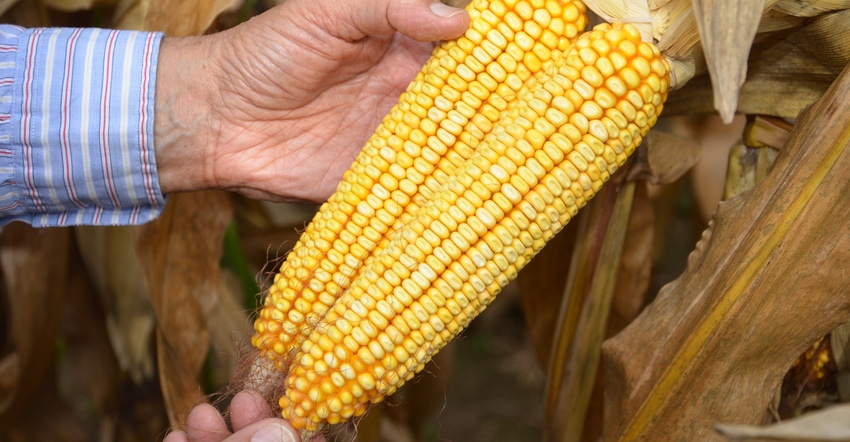July 30, 2018

Since the skies cleared and planters started rolling in very late April, corn has been on a fast track. The picture isn’t quite that rosy in some sections of the western Corn Belt and in extreme northern Indiana into Michigan, where it stayed wet longer, but in many areas, yields look promising.
By late June, Chris Hurt’s model suggested 179 to 180 bushels per acre for an average yield. Hurt is a Purdue University Extension agricultural economist. The pace of growth during the first half of the season was phenomenal. Many fields were tasseling and pollinating by July 4.
Despite all this optimism for high yields, there’s still a chance for a hiccup or two, and a detour that might result in a good crop but not a great crop. Bob Nielsen, Purdue Extension corn specialist, reported in mid-July that some farmers were noticing very long silks in fields that were pollinating. Long silks typically indicate that the kernels attached to those silks aren’t fertilized. Nielsen suggested it could be related to silks coming out before tassels on certain modern hybrids. The impact could be kernel set issues with butt kernels. However, he said it could be a minor issue, if it’s an issue at all.
Hot nights
I’m not an agronomist or weather expert, but I’ve worked with some very talented ones over the years. I’m going out on a limb, but I believe the factor that could derail record yields this year could be summer heat — specifically, hot nights.
Dave Nanda, a former corn breeder and now independent crops consultant, has cautioned me not to get too far out on that limb. Overall, the crop looks excellent in many places. Yet he acknowledges that my theory has merit.
The late Jim Newman, a Purdue weather expert, studied how final corn yields compared to USDA estimates released from August on through the season. He did most of this work from the 1960s through the 1980s. Although this is a bit of oversimplification, in general, in years when summers were cool and wet, yields went up from initial estimates. If it was hot and dry, final yields tended to be lower than earlier estimates. This summer has ample moisture so far, but it’s been hot. Local weather forecasters have made references to 1988 several times. Weather resembles 1988 without the drought in the first half of the season.
Indianapolis recorded 19 days of 90 degrees F or higher by July 10. That’s the average for the entire summer. Long-range weather forecasts from the National Oceanic and Atmospheric Administration suggest a continuing warmer-than-normal trend into fall. Newman wouldn’t have dialed in a hot summer in a recipe for record corn yields.
The real issue is night temperatures. Nanda notes that corn needs rest at night. If temperatures are warmer than corn likes, it uses photosynthates that would otherwise go into kernels and add weight and yield. You need look back only to 2017 to see the value of cool nights during grain fill. Many credit relatively cool nights in August and early September with helping produce plump kernels and high yields a year ago.
Call me a naysayer or a devil’s advocate. No one gets more excited about super-high corn yields than me. Consider this food for thought. Maybe the simple cliché “Don’t count your chickens until they hatch” applies. After all, baby chicks developing inside the egg require a constant temperature, not excess heat, to hatch!
Comments? Email [email protected].
You May Also Like




